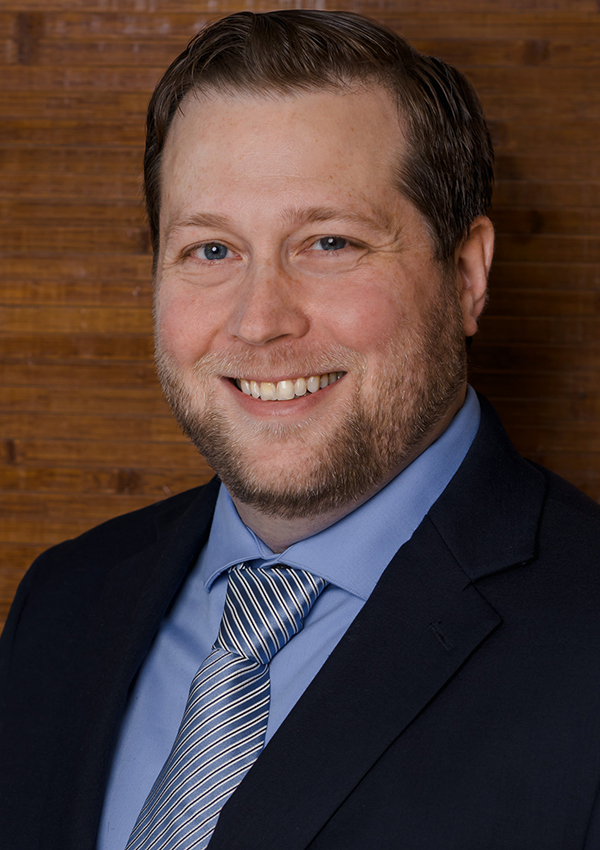
Neal Morton
Dr. Morton will recruit a new graduate student for Fall 2024 admission to the Neuroscience PhD program.
Web Site: https://hamllab.org
Degree: Ph.D., Vanderbilt University
Research interests:
People are extremely skilled at recognizing patterns in the world and using knowledge about these patterns to quickly adapt to changing circumstances. For example, based on our past experience, we can learn to behave in very different ways at the office, at a party, or on a date. However, the means by which our brains organize and deploy our complex knowledge of the world remain mysterious. Using human neuroimaging data, combined with modern approaches to machine learning, I work to develop models of learning and inference that can explain how we use our experiences to make sense of our world. By developing empirically informed models of complex learning, I aim to help facilitate real-world efforts to improve learning and develop better treatments for memory disorders.
Selected Publications:
Morton NW, Zippi EL, Preston AR. 2023. Memory reactivation and suppression modulate integration of the semantic features of related memories in hippocampus. Cerebral Cortex. 33(14) 9020–9037. doi:10.1093/cercor/bhad179.
Pudhiyidath P*, Morton NW*, Viveros Duran R, Schapiro AC, Momennejad I, Hinojosa-Rowland DM, Molitor RJ, Preston AR. 2022. Representations of temporal community structure in hippocampus and precuneus predict inductive reasoning decisions. Journal of Cognitive Neuroscience. 34(10) 1736-1760. *authors contributed equally. doi:10.1162/jocn_a_01864.
Morton NW*, Zippi EL*, Noh SM, Preston AR. 2021. Semantic knowledge of famous people and places is represented in distinct networks that converge in hippocampus. Journal of Neuroscience. 41(12) 2762-2779. *authors contributed equally. doi:10.1523/JNEUROSCI.2034-19.2021.
Molitor RJ, Sherrill KR, Morton NW, Miller, AA, Preston AR. 2021. Memory reactivation during learning simultaneously promotes dentate gyrus/CA2,3 pattern differentiation and CA1 memory integration. Journal of Neuroscience. 41(4) 726-738. doi:10.1523/JNEUROSCI.0394-20.2020.
Morton NW, Preston AR. 2021. Concept formation as a computational cognitive process. Current Opinion in Behavioral Sciences. 38: 83-89. doi:10.1016/j.cobeha.2020.12.005.
Morton NW, Schlichting ML, Preston AR. 2020. Representations of common event structure in medial temporal lobe and frontoparietal cortex support efficient inference. Proceedings of the National Academy of Sciences. 117(47): 29338-29345. doi:10.21105/joss.02669.
Morton NW*, Sherrill KR*, Preston AR. 2017. Memory integration constructs maps of space, time, and concepts. Current Opinion in Behavioral Sciences. 17:161-168. * authors contributed equally. doi:10.1016/j.cobeha.2017.08.007.
Morton NW, Polyn SM. 2017. Beta-band activity represents the recent past during episodic encoding. NeuroImage. 147:692- 702. doi:10.1016/j.neuroimage.2016.12.049.
Morton NW, Polyn SM. 2016. A predictive framework for evaluating models of semantic organization in free recall. Journal of Memory and Language. 86:119–140. doi:10.1016/j.jml.2015.10.002.
Kragel JE, Morton NW, Polyn SM. 2015. Neural activity in the medial temporal lobe reveals the fidelity of mental time travel. Journal of Neuroscience. 35(7):2914-2926. doi:10.1523/JNEUROSCI.3378-14.2015.
Morton NW, Kahana MJ, Rosenberg EA, Baltuch GH, Litt B, Sharan AD, Sperling MR, Polyn SM. 2013. Category-specific neural oscillations predict recall organization during memory search. Cerebral Cortex. 23(10):2407-2422. doi:10.1093/cercor/bhs229.